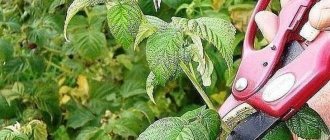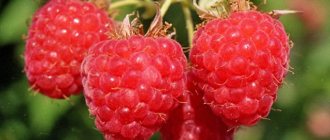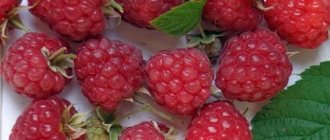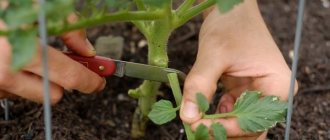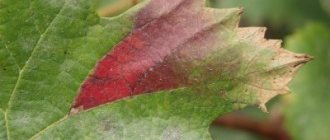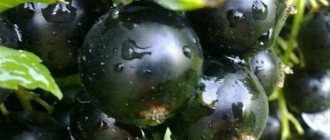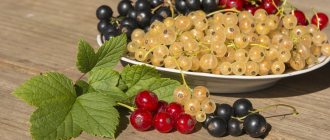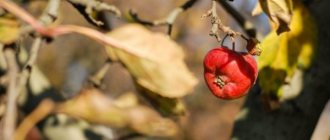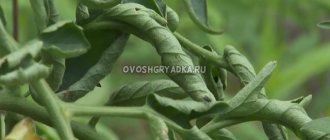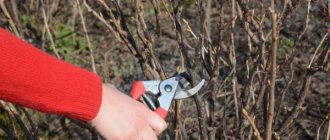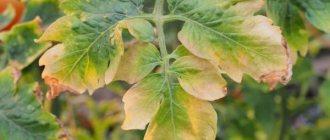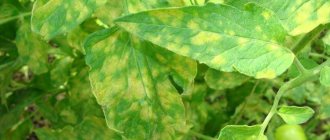Raspberries. The beneficial properties of this shrub are recognized not only by natural healers, but also by official medicine. The Greek island of Crete is considered the birthplace of raspberries, and the creation of the first raspberry garden in our country is attributed to Yuri Dolgoruky. Currently, Russia is recognized as the world leader in raspberry cultivation, with an average output of as much as 200,000 tons of berries per year. However, today we will tell you not about the fruits, but about the leaves of this shrub. What are their benefits? When to collect raspberry leaves for tea? And why is raspberry called the most useful female plant? Let's try to figure it out.
Beneficial properties of raspberry leaves
If the harvest is still far away, but you want to feel the raspberry aroma, try making tea from the fresh leaves of this amazing plant.
When can you pick raspberry leaves for tea? Almost immediately after their appearance. Many even insist that the collection should be done before the first flowers appear and that it is the May raspberry leaves that are the most useful.
Raspberry leaves are used:
- To lower body temperature during colds, as well as to treat cough.
- As an anti-inflammatory agent for diseases of the respiratory and digestive organs.
- To heal wounds and stop bleeding.
- For the treatment of diseases of the female genital area.
- As an immuno-strengthening and tonic agent.
The benefits of raspberry leaves are due to the high content of vitamins, salicylates, flavonoids, tannins, mineral salts and folic acid.
Picking raspberry leaves for tea
The leaves of wild forest raspberries are richest in vitamins.
It is advisable that the raspberry patch be located deep in the forest, away from highways and railways. If the forest is far away or you are afraid to travel through it, pay attention to garden raspberries.
The main thing when preparing raspberry leaves for tea is their quality. As you know, raspberries are often attacked by various bugs, due to which the plant begins to hurt and dry out. The leaves become covered with black spots and “rusty” veins. Such raw materials will not suit us. Try to collect only healthy, rich green leaves.
You may be interested in: St. John's wort, its benefits and how to use it
There is no clear answer to the question of when is the best time to collect raspberry leaves for tea. Many people collect from early spring until the first frost. However, the chances of finding healthy leaves by autumn are significantly reduced, and the beneficial properties of the leaf disappear over time.
When should you collect raspberry leaves for tea when preparing them for the winter?
Based on the above, the optimal time for collecting raw materials for drying is the end of May - the first half of June. It is important to collect in dry and sunny weather. The ideal time for collection is 10-11 am. Don't forget to prepare reliable gloves or mittens for collection. Raspberries don't really like to part with their leaves and can seriously scratch you.
To harvest, first of all collect the top triple leaves and the first young shoots of the plant. Gently tear off the leaves with your hands or use scissors. Experienced pickers recommend collecting leaves in small portions, so that as little time as possible passes between picking the bush from the leaf and drying it.
Terms and rules of collection
In order to ultimately get aromatic tea, you first need to collect the greens on time and correctly, so that the content of useful substances is maximum. The best time is considered to be the first weeks of June, before the bush begins to bloom, since during this period all the plant’s forces are aimed at increasing green mass.
Many gardeners harvest raspberry leaves throughout the season, from May to September, sometimes combining this process with sanitary pruning of plants.
It should be borne in mind that mass harvesting of greenery in July, during the fruiting period, can weaken the bush and lead to the loss of part of the harvest. The leaves are collected by hand; you can also pick a cutting or cut off the entire top of a young shoot. It is important not to completely remove all the greenery from the bush.
See also
How to properly care for remontant raspberries so that there is a good harvest
Read
How to dry raspberry leaves for tea
There are several ways to dry raspberry leaves.
- The easiest option is to prepare raspberry leaves for tea along with the branches. The top of the raspberry bush is cut off, tied into a broom, lightly washed with water and hung to dry. After drying, the branches with leaves are broken, and the finished raw materials are poured into fabric bags or glass jars for storage.
- The usual method of drying leaves in attics or in electric dryers is also quite popular. To prevent the formation of mold, it is recommended to stir the leaves periodically.
- The next drying method is more difficult, since when using it, each leaf is processed separately.
- First, we give the leaves a “quality check.”
- Next, wash the leaves, put them in rows on a flat surface and press them down with a weight on top. It is important to slightly wilt the leaves without allowing them to dry out completely.
- We roll the dried leaves into tubes, several at a time, put them in a container and cover with a damp cloth.
- We wait about 6-8 hours (you can leave it overnight), grind the raw materials and dry them in an uncovered oven.
You may be interested in: Turkish tea, how tea is brewed
When raspberry leaves are prepared for tea in this way, the aroma near the container with the leaves is simply divine. And the tea itself made from raspberry leaves is much tastier and healthier.
How to collect correctly
Leaves are harvested early in the morning in sunny weather . Wet plant materials take longer to dry and have a shorter shelf life. Young leaves are most valued - the first and second groups of leaves on the bush, counting from the top. It is not advisable to collect old or leaves from damaged bushes, as they contain less useful substances.
The leaves are torn from the branch carefully so as not to damage it , and each one is carefully inspected for integrity and the presence of pest larvae. Leaves suitable for harvesting are bright green in color, without yellow spots or signs of damage by insects.
How to brew tea from raspberry leaves correctly
The main feature of brewing tea from raspberry leaves is “wrapping the teapot.” In Soviet times, any tea was brewed in a similar way. In the kitchen, housewives even had specially made insulated covers for the teapot. If there is no cover, you can wrap the kettle with a terry towel. The heating process should last at least 20 minutes.
The recipe for making tea is the same for both fresh and dried leaves.
Tea is brewed in the following proportions:
- 2 tablespoons of chopped raspberry leaves;
- 2 cups boiling water.
Benefits of raspberry leaf for women's health
Have you ever heard the phrase that raspberries are a female berry? It was not for nothing that they began to call it that. Raspberry leaves and berries are actively used to treat numerous diseases of the female genital organs.
So, for painful menstruation, it is recommended to take a medicinal decoction prepared as follows.
- 10 g of raspberry leaves are poured into 1 cup of boiling water.
- The mixture is infused for 10-15 minutes and filtered.
Taking the decoction reduces pain and reduces bleeding.
To treat inflammatory processes in the female genital organs, douching or bathing with raspberry broth is recommended.
It is believed that regular consumption of raspberry leaf tea can restore hormonal levels, normal ovarian function, and even help with problems conceiving a baby.
Pregnant women are not advised to take drinks made from raspberry leaves until 35 weeks. But later, raspberry infusion or tea can provide significant assistance in preparing the body for childbirth.
Raspberries Calendar of propagation and care work
- Winter spring
- Summer
- Autumn winter
January February March
Relative peace.
Spring
April
The beginning of the growing season is the swelling of the buds, from April 20 - a green cone.
Remove covering material by approximately April 20th. After this, cut out broken and extra shoots, leaving no more than 6 of the strongest ones on the bush; remove weak and damaged tops.
Treat with a 4% urea solution (350-400 g per 10 liters of water), to which add 20 g of copper sulfate and 10 g of boric acid (this will be a nitrogen fertilizer and protection against disease). Discharge of melt water.
Garter to support.
The first loosening, as soon as the top layer of soil dries slightly. After loosening, mulch a 0.8-2 m strip with humus or compost, or small twigs from pruning, 4-8 cm thick.
Dig up the row spacing with a cultivator and preferably sow with green manure. An acceptable option is to mow the row spaces with a lawn mower and pierce the soil with a fork to aerate it.
From April 10 - Planting raspberries.
May
Until May 10 - green cone. From May 10 to May 30 - the appearance of buds.
In three stages: May 1-5, after two weeks, after another two weeks - spray against fungal diseases (spotting of leaves and stems): 50g of urea and 40g of copper sulfate per 10 liters of water. In mid-May - spraying against pests.
In May - Cultivation and removal of weeds. Removing excess and weak shoots near the bush. Until May 5 - Planting raspberries. Until May 15 - Drainage work in waterlogged areas.
In the 2nd half of May - Liquid feeding.
From May 15 - Collecting raspberry beetles and cutting out young shoots damaged by raspberry flies.
Summer
June
Bloom.
In June - removal of excess and weak shoots near the bush; loosening and removing weeds; plantation irrigation. Until June 15 - collecting raspberry beetles and cutting out young shoots damaged by raspberry flies.
Until June 25 - collecting raspberry beetles and cutting out young shoots damaged by raspberry flies.
In June - July, add mulch as it dries - with mown grass and weeds from weeding. Add ash under the mulch - 50g per 1 sq.m (the berries will become larger, sweeter and more aromatic).
READ ALSO: Description and secrets of successful cultivation of Arochny grapes
In the 2nd half of June, after flowering - summer liquid feeding. The beginning of ripening and picking of berries.
July
Maturation.
At the beginning of July (when raspberries begin to bear fruit) - In July - Removing excess and weak shoots near the bush. Irrigation, loosening and weed removal. Berry picking.
After harvesting summer raspberries, fertilize with phosphorus-potassium fertilizers (30g per 1 sq.m.). Cut off fruit-bearing shoots. carry out spraying (50 g of urea per 10 liters of water with the addition of one of the preparations: “Aktell-lik”, “Apollo”, “Decis”, “Iskra Ts-M”, “Karate”, according to the attached instructions).
August
Maturation. Until August 25 – Berry picking; cultivation and weed removal. From August 15 to September 15 - Cutting and burning of fruit-bearing branches. From August 20 to September 15 - Application of phosphorus and potassium fertilizers.
From August 25 - Digging of soil between rows; preparation of seats.
Autumn
In autumn, be sure to mulch with organic matter - straw manure, leaves, peat, compost, etc., in a strip of 80 cm, in a layer of 2-5 cm.
September
Leaf fall, ripening. In September - Digging the soil between the rows. Until September 15 - Cutting and burning of fruit-bearing branches; application of phosphorus-potassium fertilizers.
Pinch the tops of all summer raspberry shoots to speed up the ripening of buds and the fall of leaves. Until September 20 - Preparation of seats.
From September 15 to October 15 - Tying and bending shoots for the winter; mulching new plantings and mature raspberries.
From September 25 - Autumn planting of raspberries.
At the end of September - beginning of October for summer raspberries: • cut off the unripe part of the shoots;
• bend the raspberries (pull 4-5 adjacent shoots with force, then tilt them to the ground and pin them with hooks).
October
Leaf fall.
In October - Winter irrigation of the plantation; mowing all shoots and mulching with organic matter of remontant annual raspberries, in a strip 80 cm wide; introducing fecal matter into the furrows. Until October 20 - Tying and bending summer raspberry shoots for the winter; digging up soil between rows; mulching new plantings and mature raspberries.
November December
Relative peace.
Covering with snow to protect replacement shoots from frost.
Material used: Popov B.A., 1974, - berrylib.ru/books/item/f00/s00/z0000052/st001.shtml plodpitomnik.ru/stati_full.php?s=2.3
